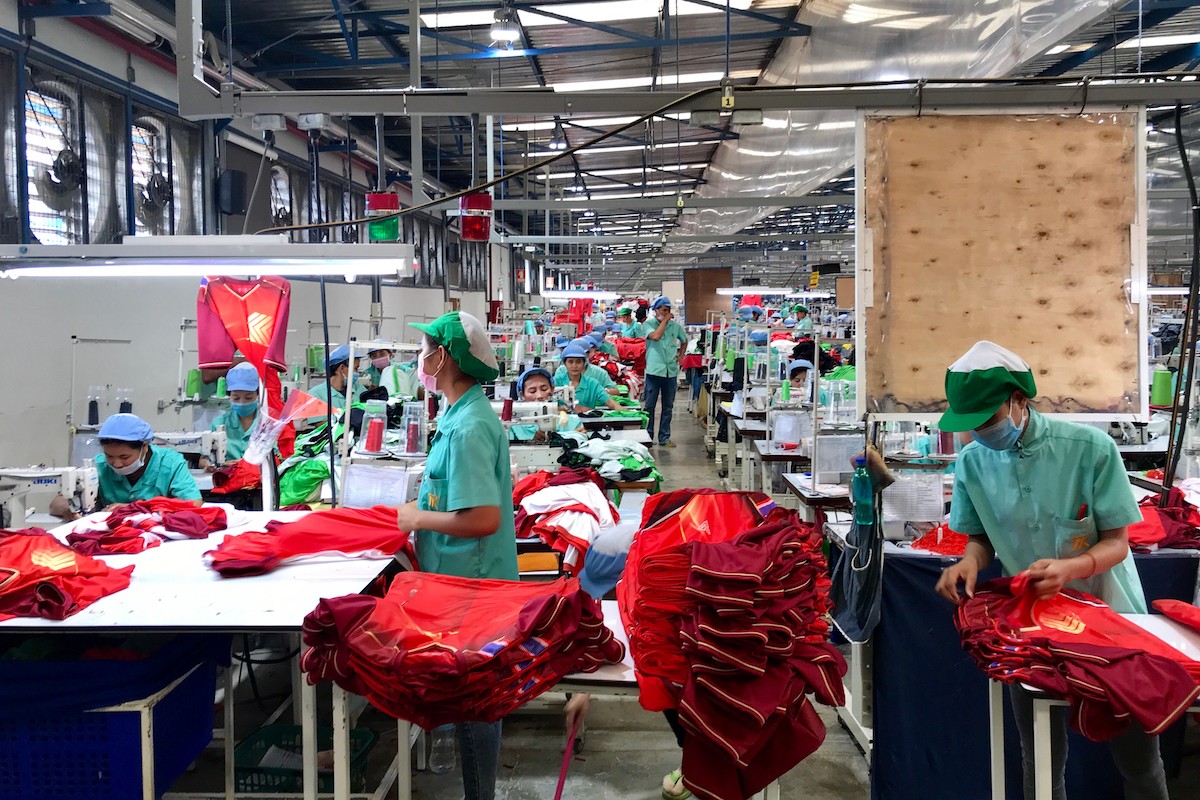The coronavirus pandemic has had a catastrophic impact on Asia’s garment industry, cutting exports in some countries by almost 70 percent to major buyer countries and putting the livelihoods and employment of millions of workers at risk.
A report released by the International Labor Organization on Thursday, October 22, noted that total combined imports to the US, EU and Japan from ten major apparel and footwear producing countries in Asia fell significantly between January and June this year when compared to the same period in 2019.
The largest percentage decreases in exports were observed in China, India, the Philippines, and Sri Lanka.
The report also noted that restrictions on freedom of association existed even before the pandemic in most of the countries in the region and delayed or inadequate payments to apparel workers have led to protests in Bangladesh, Cambodia, Indonesia and the Philippines, among others.
The ILO report noted in the Asian region imports from garment-exporting countries dropped by up to 70 per cent in the first half of 2020, due to collapsing consumer demand, government lockdown measures, and disruptions to raw material imports necessary for garment production.
As of September 2020, almost half of all jobs in garment supply chains were dependent on demand for garments from consumers living in countries with the most stringent lockdown measures in place, where retail sales have plummeted.
The Asia-Pacific region employed an estimated 65 million garment sector workers in 2019, accounting for 75 per cent of all garment workers worldwide.
“It is vital that governments, workers, employers and other industry stakeholders work together to navigate these unprecedented conditions and help forge a more human-centered future for the industry,” said Chihoko Asada Miyakawa, ILO regional director for Asia and the Pacific.
Although governments in the region have responded proactively to the crisis, the report revealed the closure of thousands of factories across the region, either temporarily or indefinitely.
Worker layoffs and dismissals have increased sharply, while factories that have reopened are often operating at reduced workforce capacity.
Christian Viegelahn, labor economist at the ILO regional office for Asia and the Pacific, said the typical garment worker in the region lost out on at least two to four weeks of work and saw only three in five of her co-workers called back to the factory when it reopened.
“Declines in earnings and delays in wage payments were also common among garment workers still employed in the second quarter of 2020,” said Viegelahn.
In addition, the report identified how women, who make up the majority of the workers, have been disproportionately affected by COVID-19, exacerbating existing inequalities in earnings, workload, occupational segregation, and distribution of unpaid care work.
Although the garment sector in Asia is generally marked by low levels of collective bargaining at both sector and factory level, the report noted that social dialogue appears to have helped strengthen crisis responses in countries where dialogue mechanisms are in place.
The brief called for more inclusive and meaningful social dialogue at national and sectoral levels in countries across the region.
Other recommendations highlighted include the need for continued support for enterprises, as well as the extension of social protection for workers, especially women.
The recent global Call to Action, an international multi-stakeholder initiative facilitated by ILO, is also noted as a promising example of industry-wide solidarity in addressing the crisis.
The report titled “The supply chain ripple effect: How COVID-19 is affecting garment workers and factories in Asia and the Pacific” is based on extensive desk research and analysis of publicly available and enterprise-level data, together with interviews with leading stakeholders from across the sector in Asia.
- For the latest COVID19 figures in your country, visit LiCAS.news’ COVID-19 “Really Simple” tracker







